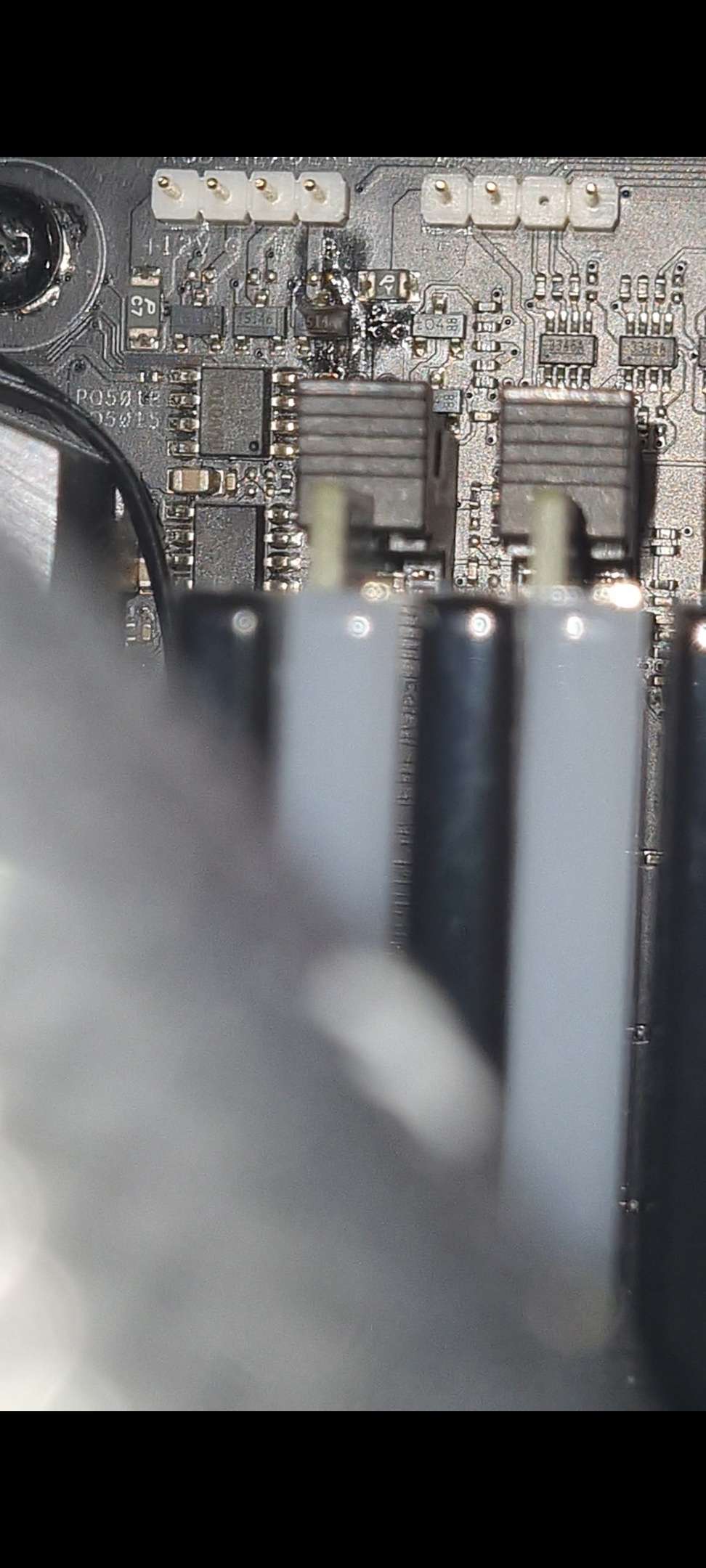I've been using my ASUS Z390 Hero for almost 2 months and there's never been any issues. I just accidentally noticed that there's something fried below an rgb header above ram. Have no clue why and when that happened and what it's connected to, but originally it came fine.
It looks like rgb connected area. It's right under the trace B (of RGB). I do use multiple apps at once to control different lights and at least Armoury Crate indicates that it syncs with rgb headers, although there's nothing plugged but maybe something interfered with something else?
Would love to get a piece of advice from someone who understands this part of motherboards well.

It looks like rgb connected area. It's right under the trace B (of RGB). I do use multiple apps at once to control different lights and at least Armoury Crate indicates that it syncs with rgb headers, although there's nothing plugged but maybe something interfered with something else?
Would love to get a piece of advice from someone who understands this part of motherboards well.

Last edited:


